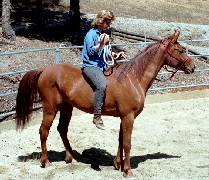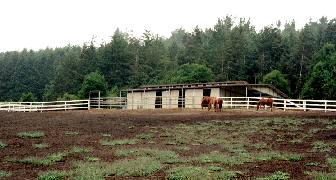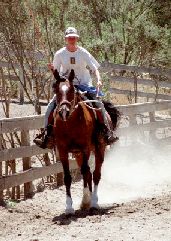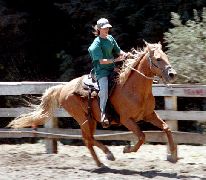Horse Sense (August, '97)
Horse Sense, run by Equine Research Foundation, was my first Earthwatch project I joined from August 4 to 16 in 1997.
There were about 100 projects in Earthwatch; however, I chose this project. Because I really like horses, and it was very attractive for people who love horses. Even if it had been my first foreign volunteer project, I thought I would have been able to handle it with my knowledge on horses.
 |
| 2-Week Team Members |
The meeting point was Aptos, it took about 2 hours by bus from Sun Francisco. It was a very beautiful and quiet town.
Volunteer members were 6 people, 4 Americans, 1 English and me. 4 volunteers were in 2-week team and 2 were in 1-week team. All of them were women except a manager and me. Moreover, principal investigator, Dr. Eveliyn and assistant staff members were women.
MMany female volunteers apply for this project. On the other hand, only a few male volunteer participate in it. In addition, 3 of our 6 volunteer members were very lively teenagers.
All the members were related to horses.
 |
Principal Investigator
Dr. Evelyn B. Hanggi |
There were 5 horses there, named Ellie, Cache, Tinket, Coco and Tequila.
The Equine Research Foundation investigates the cognitive capabilities of horses. It uses conditional discrimination procedures to test for learning abilities and stimulus associability. Other methods are used for examining memory processes, etc.
Equine Research Foundation has proved many facts with scientific evidence.
There are many misunderstandings on horses. For example, it is believed that horses are color-blind. But it's wrong. According to the Equine Research Foundation's test, horses can discriminate colors.
 |
| A Pasture and a Stable at Equine Research Center |
Volunteers assist with daily experimental sessions, animal training and care, data analysis, etc. Besides, volunteers can attend informal lectures and meetings on horses, and fields trips. The first daily tasks in the morning are collection of manure in pastures, cleaning up stalls and feeding. Then equipment set-up, operation of test apparatus and videotape recorder, taking horse's behavior during test sessions, etc. We tested 2 - 4 horses each day.
I thought Earthwatch projects would have required volunteers to work hard before going to the project. But we enjoyed working it. In the second week, 2 volunteers left the project and 4 remained. But it was easy to do for us.
We didn't always stay at Equine Research Foundation during the project. Sometimes we went out for hiking, visiting farms and riding clubs.
2 photos at the bottom show very unique rides by using 2 sticks without a bridle, and by using a strap connecting with a halter instead of a rein and a bridle.







